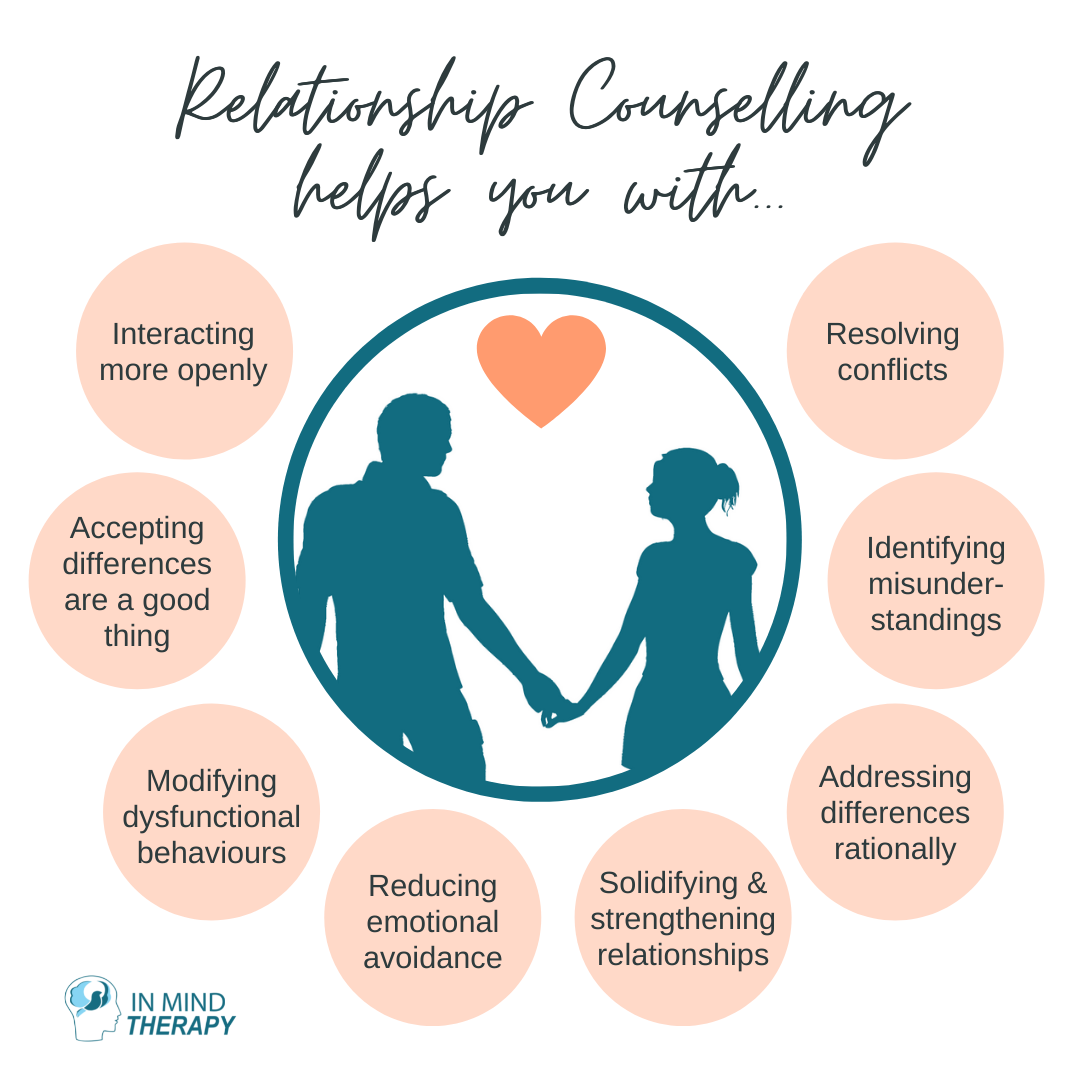3 Easy Facts About Aim Point Counseling Described
3 Easy Facts About Aim Point Counseling Described
Blog Article
The Buzz on Aim Point Counseling
Table of ContentsThe Aim Point Counseling PDFsAim Point Counseling Fundamentals ExplainedAim Point Counseling Things To Know Before You BuyThe 30-Second Trick For Aim Point CounselingNot known Factual Statements About Aim Point Counseling Not known Details About Aim Point Counseling
The longitudinal design involves a pre-treatment study and two follow-up surveys at 3- and 12-months post-intervention. The research study is set in eight Relationships Australia Victoria centres, across city, outer suburbs, and regional/rural websites. Relationships Australia, a non-government organisation, is the biggest provider of couple counselling and relationship solutions in Australia.
These high prices of partnership breakdown have been constantly connected with negative wellness effects for both grownups and youngsters complying with divorce/separation.
9 Easy Facts About Aim Point Counseling Explained
Longitudinal research studies additionally suggest that children of separation have a higher incidence of emotional disorders, medication and alcohol usage, and risky sex-related practices [7] Although the results of separation and splitting up can be harmful, study suggests that high connection disharmony in undamaged pairs is also most likely to have negative results.
Research study to day has actually determined both couple and specific aspects that may contribute to relationship discord. These consist of relationship contentment and commitment at the pair degree, and anxiety at the specific level.
The Ultimate Guide To Aim Point Counseling
Relationship fulfillment has actually been one of the most typical result variable identified in greater than 200 assessments of pair coaching [11,12] Researches have actually located considerable enhancements in relationship contentment from pre- to post-treatment [13,14] and throughout one to 2 years complying with coaching [15] In these studies, relationship satisfaction was most regularly examined utilizing the Dyadic Change Scale (DAS) [16] Therefore, while a lot of research studies suggest enhancements in partnership satisfaction following pair coaching, they are limited by the examples and measures utilized, mostly short-term follow-up period, and evaluations that do not represent the dyadic nature of pair information. Partnership dedication, based on procedures such as the Dedication Stock (CI) [19], is one more generally investigated partnership result.
To summarise, research study suggests that couple-specific variables as well as specific factors may forecast the results of pair counselling and relationship solutions. The causal direction of these relationships, nevertheless, is much less clear. These monitorings are necessary, since, to validate and guide the application of relationship services such as couple therapy, empirical proof needs to check out both the results of partnership solutions and the variables that anticipate effective treatment.
For that reason, there is an expanding agreement that effectiveness studies must be enhanced by performance study to best inform professional method [ 29] The minimal efficiency study that exists to day suggests that pair coaching can boost results such as relationship fulfillment [33,43], communication abilities and general wellness [44], at the very least in some European nations.

We presently know little about the accounts of pairs that seek out connection education contrasted with those who seek relationship counselling, or the end results of these programs. Anecdotal proof recommends that there may be considerable distress amongst at the very least some pairs looking for relationship education and learning.
See This Report about Aim Point Counseling
Responses includes individuals completing sets of questions regarding their connection Resources (e.g. steps of interpersonal problems), and receiving information on what their ratings suggest. Cognitive-behavioural approaches advertise altering cognitions to promote favorable partnerships.
These meta-analyses highlight limitations in the current literary works on relationship education. This sample account might not represent customers that normally present for connection education and learning.
About Aim Point Counseling

Extremely little research has actually taken a look at the comparative benefits of pair coaching and relationship education and learning programs. As customers are most likely to self-select into these service kinds, it is unclear whether characteristic connection distress accounts present to every solution type, or undoubtedly whether there is an interaction between presenting profile, solution kind and end result.
(https://sketchfab.com/a1mpoint)
Thus, we have included a 12-month follow-up to determine longer-term trends and effects.
As a result, we propose to make use of multi-level analytical modelling treatments that regulate for the inter-dependence of couple information to evaluate any therapy results. The details objectives of the ECC research are to: 1. Map accounts of customers seeking area agency-based couple therapy vs. partnership improvement programs in regards to socio-demographic and partnership signs (such as partnership satisfaction, partnership dedication, interpersonal problems, and reasons for going to), in addition to wellness (such as clinical depression, general wellness) and health and wellness service use (eg.
Establish whether couple counselling and relationship education services boost three- and twelve-month end results for relationship satisfaction, commitment, and clinical depression, using statistical evaluations proper to pair data. marriage counseling. Identify the relative payments of client factors (individual and couple) and therapy/education variables to end results at 3- and 12-months, and to sustainability of end results over time.
A Biased View of Aim Point Counseling
Multi-level modelling to determine pre-post distinctions, managing for dyadic (couple) degree. To add to the literature assessing the effectiveness of community-based pair therapy.
Report this page